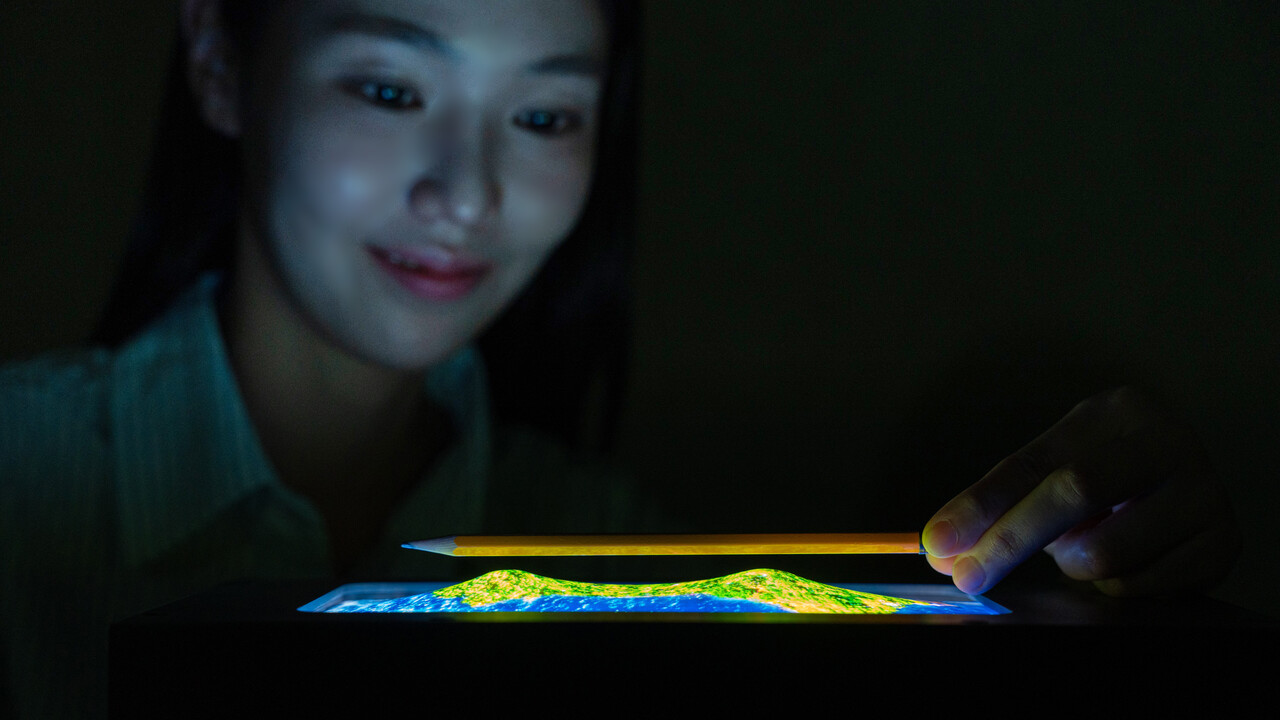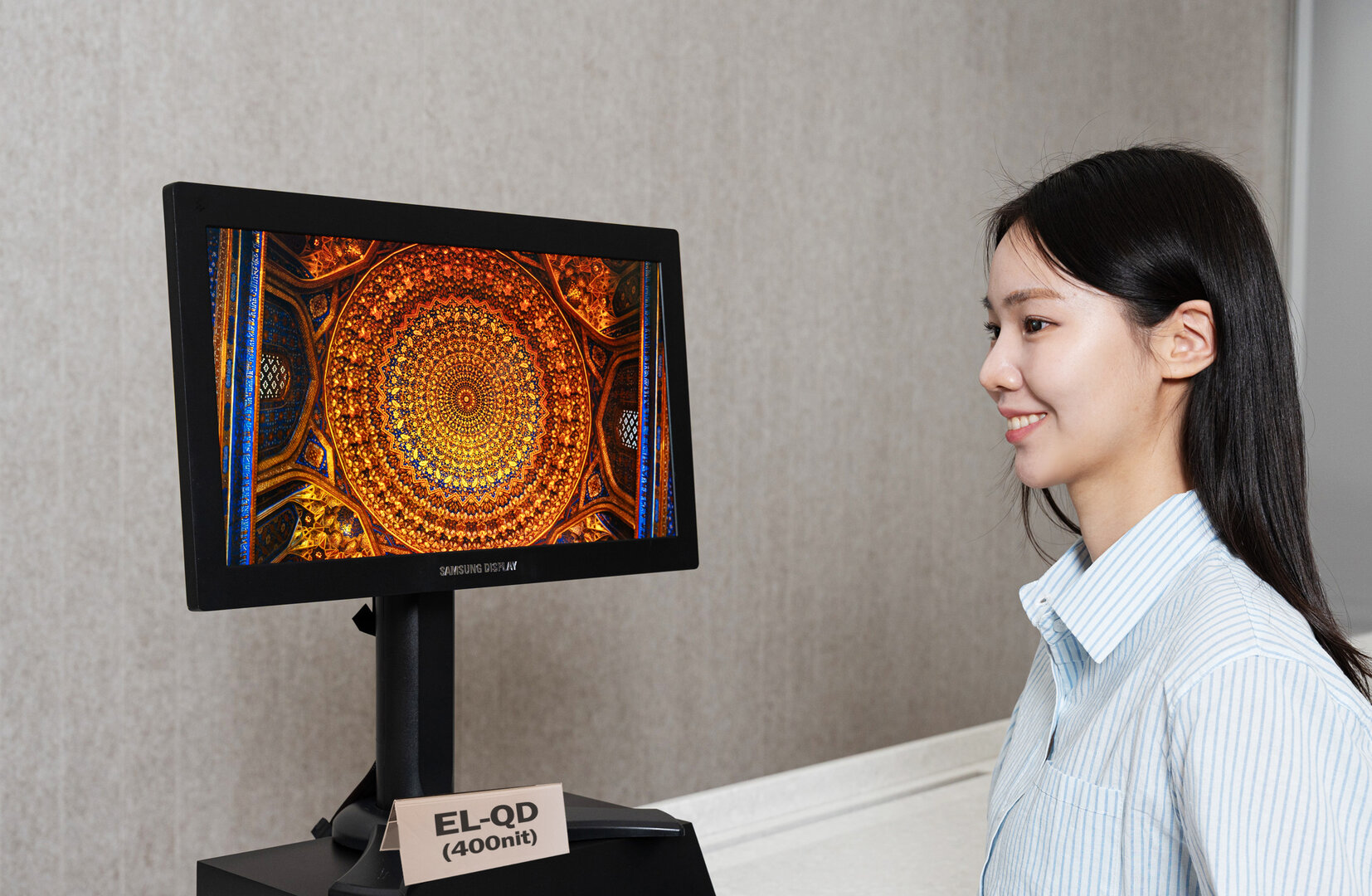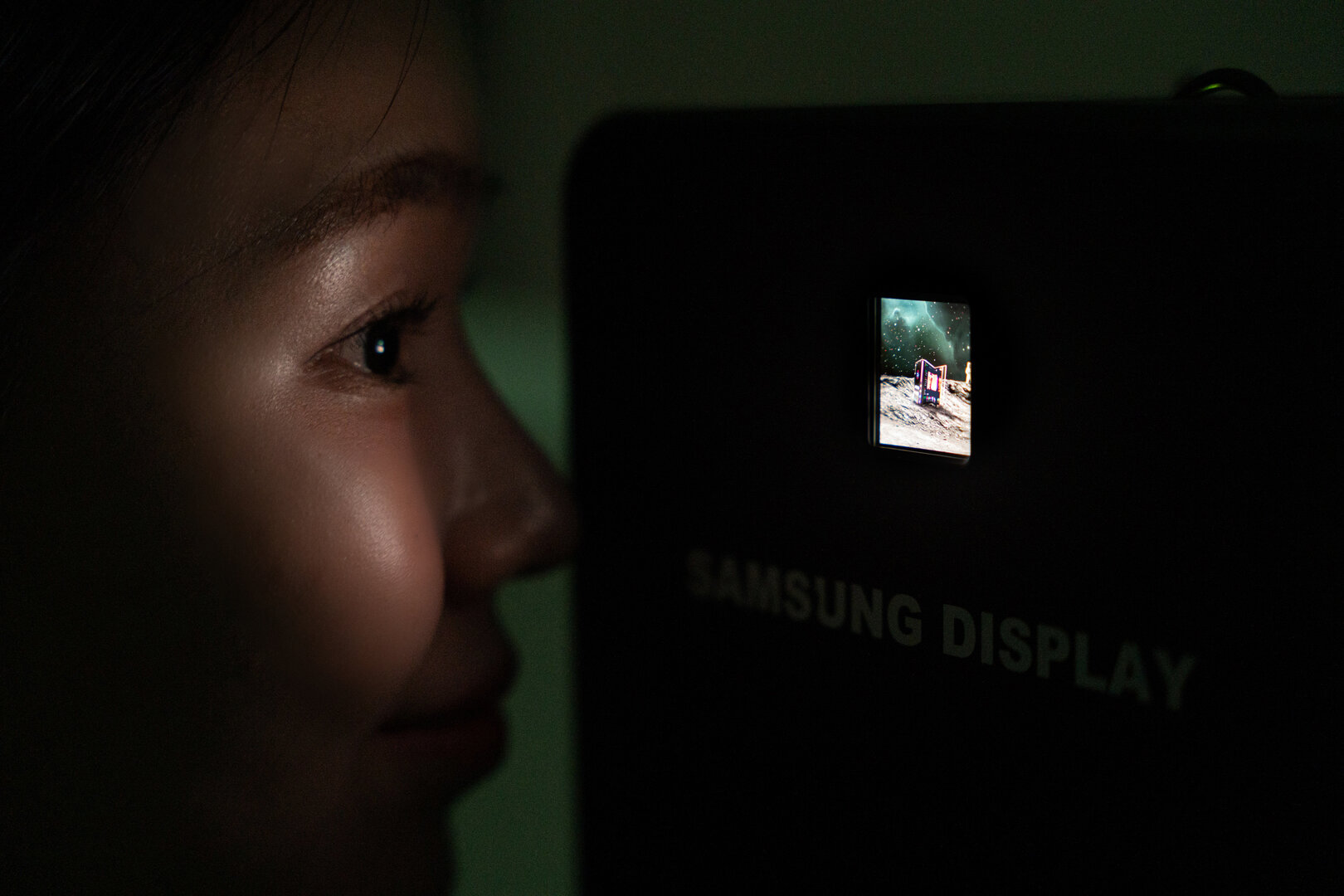Display Week: Samsung Showcases EL-QD with 400 nits and OLEDs with 5,000 PPI 24 comments

Image: Samsung Display
For Display Week 2025 in San Jose, Samsung Display is showcasing several new prototypes of panel development around EL-QD (electroluminescence quantum dot) and OLEDs (OLED on silicon), which boast impressive technical specifications. Samsung Display is also showcasing a micro-LED panel, which can be expanded across multiple axes.
Samsung Electronics’ Panel division is once again proving at Display Week that a glimpse into the future can be gained at the show for new display and panel technologies. What manufacturers are showing there as research projects and early-stage developments could become a reality in consumer electronics in a few years.
EL-QD panel with 400 nits and 264 ppi
In San Jose, the company is exhibiting, among other things, a developed prototype of an EL-QD panel. The abbreviation stands for electroluminescence quantum dot and describes self-illuminating quantum dots a few nanometers in size that emit highly secure, controllable red, green, and blue (RGB) when electrically controlled. Unlike the photoluminescence of current QD LCDs, the blue light does not need to be changed to red or green. And unlike QD-OLEDs, no OLED layer is required. This is why “true” quantum panels are often used, for which names such as QD LED or QDEL are also used. EL-QD with 400 nits and 264 ppi
 At Samsung Display, Display Week 2024 was also based on the established QD name. At last year’s show, the group released a panel with 250 nits and 202 ppi. For this year’s Display Week, the manufacturer is showcasing an EL-QD panel with 400 nits and a pixel density of 264 ppi. The stability of quantum dot materials has been a challenge so far, with blue pixels aging more quickly in particular. Samsung Display has now taken the next step in development in this regard, although the use of the toxic heavy metal cadmium can be dispensed with. The higher pixel density was achieved with an improved inkjet printing process for quantum dots.
At Samsung Display, Display Week 2024 was also based on the established QD name. At last year’s show, the group released a panel with 250 nits and 202 ppi. For this year’s Display Week, the manufacturer is showcasing an EL-QD panel with 400 nits and a pixel density of 264 ppi. The stability of quantum dot materials has been a challenge so far, with blue pixels aging more quickly in particular. Samsung Display has now taken the next step in development in this regard, although the use of the toxic heavy metal cadmium can be dispensed with. The higher pixel density was achieved with an improved inkjet printing process for quantum dots.
RGB OLEDs with 15,000 nits and 5,000 ppi
An (extremely) high pixel density is also the focus of OLED development. The abbreviation stands for OLED on silicon, meaning organic light-emitting diodes (OLEDs) that are applied directly to a silicon substrate using CMOS dormant building blocks, thus eliminating the glass or plastic substrate typical of TFTs. This should enable extremely densely packed panels with very high resolution and brightness, as well as extremely fast control.
RGB OLEDs with 15,000 nits and 5,000 PPI

For Display Week, the panel manufacturer is showing off a prototype of a 1.4-inch RGB OLED panel with 5,000 PPI, a resolution higher than 8K, 15,000 nits, 120 Hz, and 99% coverage of the DCI P3 color space. According to Samsung Display, panels of this type are intended for future XR headsets. A second variant is also being released, which is expected to reach a brightness of 20,000 nits, but in return “only” reaches 4,200 ppi. In addition to RGB OLEDs, Samsung Display also works with white OLEDs, where a white OLED light source generates the image using RGB color filters. With RGB OLEDs, however, the self-illuminating pixels are applied directly to the silicon wafer without a color filter. Multi-axis micro-LED panel
Multi-axis micro-LED panel (Image: Samsung Display) Image 1 of 2

At the show, the company is also showcasing a micro-LED panel, which is stretched across multiple axes. The prototype is demonstrated using a 3D map with corresponding surveys in the display surface. In this specific case, the panel expands simultaneously in two locations where mountains are indicated on the map.
THEME: Display Week 2025 MicroLED displays QD-LED OLED monitors Samsung Source: Samsung Display

Élodie compares monitors for resolution, refresh rate, and colour accuracy to meet gamers’ and professionals’ needs.

